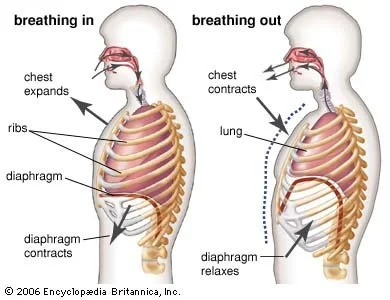Low Back Pain and Breathing: What is the connection?
by: Dr. Robin Armstrong [Chiropractor]
If you suffer from low back pain you are familiar with the feelings – stiffness, shooting pain, weak core, difficulty sitting or standing for long periods, figuring out how to tie your own shoes etc. Recently another side effect has come to light – the inability to take a full and healthy breath.
Case in point, we were visited recently by an active, healthy 75 year old man who runs regularly and does yoga. He for the longest time has felt he cannot get a deep breath in. “Oh, and I have chronic low back pain,” he tells us. Aha! We know from several recent studies people with a history of low back pain breathe more shallowly, hold their breath, or have dysfunctional breathing patterns when challenged to a physical task.
Why Dysfunctional Breathing Matters:
When we breathe in a shallow & dysfunctional ways, the body takes that as a sign of stress. Our brain responds with a stress response which increases stress hormones throughout our body. Those increased hormones decrease our ability to recover from illness or injury and increase how much we feel pain.
Shallow breathing also causes us to recruit accessory muscles of breathing (the smaller muscles of the chest and neck), instead of the main large muscles of breathing, the diaphragm. The end result is neck pain, headaches, and poor posture with slumped forward shoulders.
Diaphragmatic breathing (good breathing), on the other hand, can lower blood pressure, reduce heart rate, relax muscles, decrease stress, and increase energy levels.
What Healthy Breathing Looks Like: A healthy breath begins with the diaphragm falling, changing the volume of our chest cavity and squeezing our abdominal organs so that the belly naturally pushes out. The intercostal muscles between the ribs allow the rib cage to expand like the handle of a bucket lifting up and out. Air fills our lungs (which you may be surprised to find out end above our collarbones) changing the pressure once again so that the diaphragm relaxes, abdomen relaxes, ribs fall and air is exhaled.
How to Assess (and Correct) Your Breathing:
Take a seat and allow your breath to settle. Place your hands on either side of your rib cage, wrapping around, below your chest. As you inhale imagine the ribs expanding 360 degrees and rising and falling in that bucket handle pattern. Observe this for a while.
Next, place your hand on your abdomen. As you inhale allow the belly to expand, and as you exhale allow it to gently contract. In our society we don’t often allow ourselves the freedom to let our tummy hang out so this may be a foreign feeling. Observe this for a while.
If you find you are struggling for breath in either of these positions you may be exhibiting altered breathing patterns – low back pain or not. You can use this test as an exercise to practice breathing more deeply by expanding the ribcage and expanding the belly.
Do not hesitate to ask Dr. Freedman or Dr. Armstrong if you notice you are having difficulty getting a full breath. We can help with the side effects of poor breathing patterns and also help address your low back pain that lead to the issue in the first place.
Breathing plays such an important role in our physical, mental, and emotional health that we want to get it right!

